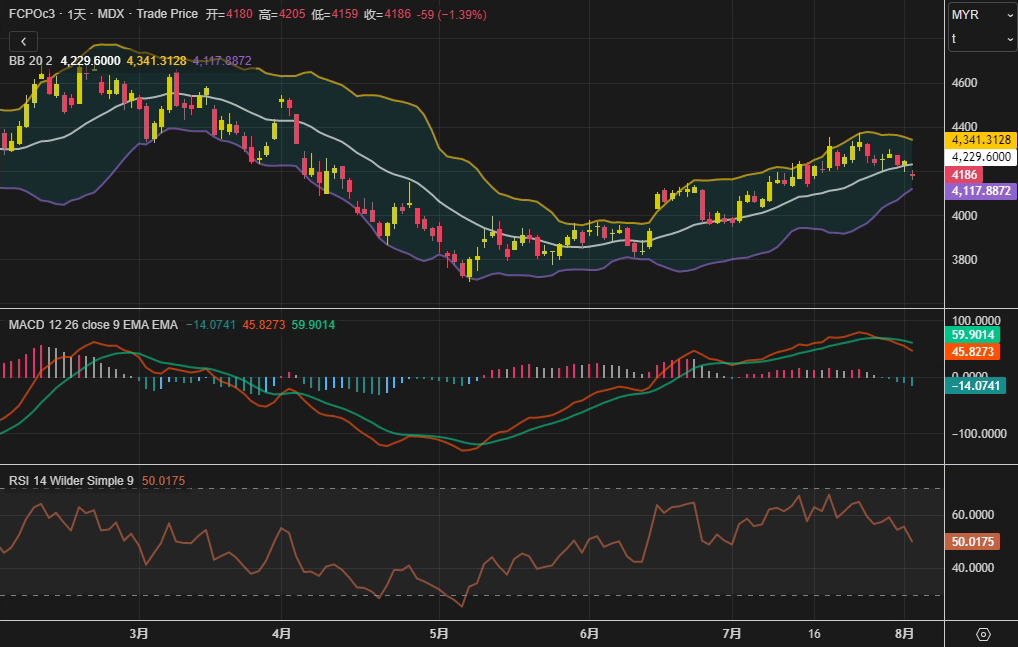Palm oil suffered a "triple blow": production, inventory, and crude oil jointly exerted pressure. Has the downward channel begun?
2025-08-04 19:25:47

Fundamental pressure highlights: inventory may hit a two-year high
A survey by a leading institution indicates that Malaysia's palm oil inventories are expected to rise for the fifth consecutive month in July, reaching a nearly two-year high. Although export data has yet to be released, the seasonal increase in production has significantly exceeded the market's capacity to absorb it. David Ng, a proprietary trader at Kuala Lumpur-based trading firm Iceberg X Sdn Bhd, noted, "The market's focus is currently on the Malaysian Palm Oil Board's (MPOB) monthly report on August 11th. If the inventory increase exceeds expectations, prices could further decline to the support level of 4,180 ringgit."
It's worth noting that India has seen structural shifts in its demand. Palm oil imports declined in July due to contract cancellations, while soybean oil imports surged to a three-year high due to price advantages and delayed cargo arrivals. This substitution effect exacerbated palm oil sales pressure. Furthermore, the ringgit appreciated 0.94% against the US dollar that day, weakening the competitiveness of dollar-denominated commodities.
Related markets drag: Crude oil and competing oils weakened in tandem
International crude oil prices retreated after OPEC+ announced its September production increase plan, indirectly weakening the economic viability of palm oil as a biodiesel feedstock. Meanwhile, while the soybean oil contract (DBYcv1) on the Dalian Commodity Exchange in China edged up 0.27%, the palm oil contract (DCPcv1) fell 0.63%, reflecting the market's cautious outlook on palm oil's fundamentals. Chicago Board of Trade (CBOT) soybean oil prices also declined, further confirming the weak global vegetable oil market.
Institutional View: Short-term pressure and key price monitoring
David Ng emphasized that MYR 4,180 is a key short-term support level from a technical perspective, a break of which could open up further downside potential. Meanwhile, resistance at MYR 4,300 needs to be broken to reverse the downward trend. Some analysts believe that current prices have already partially reflected inventory pressures, and if the MPOB report does not reveal any unexpected data, there may be opportunities for an oversold rebound. However, the medium- to long-term trend still depends on when production in major producing countries will peak.
The palm oil market is facing the dual challenges of seasonal supply pressure and demand substitution. Traders should closely monitor whether MPOB data confirms inventory expectations and the marginal impact of ringgit exchange rate fluctuations on export costs. In the absence of unexpected weather disruptions or policy stimulus, prices are likely to remain volatile and weak.

- Risk Warning and Disclaimer
- The market involves risk, and trading may not be suitable for all investors. This article is for reference only and does not constitute personal investment advice, nor does it take into account certain users’ specific investment objectives, financial situation, or other needs. Any investment decisions made based on this information are at your own risk.





















